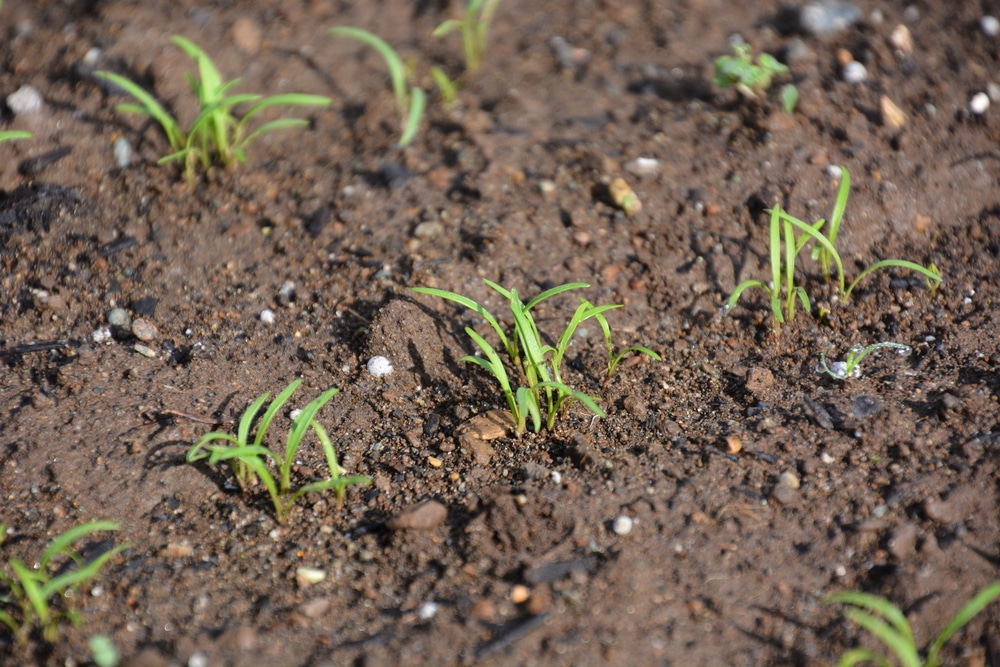Embarking on a horticultural expedition inevitably entails delving into the enigmatic world of seed germination. This intricate process, which heralds the birth of new plant life, hinges upon a multitude of factors and can vary significantly across diverse plant species. Comprehending the intricacies of seed germination empowers gardeners with the necessary knowledge to cultivate thriving and bountiful gardens.

Image: planthd.com
Unveiling the Magic of Seed Germination
Seed germination, the cornerstone of plant propagation, denotes the sequence of events that culminates in the emergence of a nascent seedling from a dormant seed. This remarkable transformation, driven by an interplay of environmental cues and internal mechanisms, sets the stage for the plant’s subsequent growth and development.
The seed, an exquisite embodiment of life in miniature, encapsulates an embryo, the embryonic plant, enveloped within a protective seed coat. Upon encountering favorable conditions, such as adequate moisture, warmth, and oxygen, the seed coat imbibes water, initiating the germination process. The embryo subsequently rehydrates and resumes metabolic activity, drawing sustenance from the seed’s stored reserves.
Environmental Influences on Seed Germination
-
Moisture: Imbibition, the uptake of water by the seed, stands as the pivotal trigger for germination. Sufficient moisture content stimulates enzymatic reactions, activates cellular respiration, and facilitates the dissolution of essential nutrients within the seed.
-
Temperature: Each plant species thrives under a specific temperature range that optimizes germination rates. Maintaining temperatures within this optimal range ensures successful germination and seedling vigor.
-
Oxygen: The availability of oxygen is vital for the respiratory processes underpinning germination. Adequate aeration allows the seed to respire efficiently, fueling the metabolic reactions necessary for growth.
-
Light: While some seeds require darkness to germinate, others exhibit a dependence on light. Understanding the specific light requirements of different plant species ensures the provision of optimal conditions for successful germination.
-
Seed Dormancy: Certain seeds exhibit dormancy, a state of metabolic quiescence that prevents germination under unfavorable conditions. Breaking dormancy requires specific treatments, such as scarification or stratification, to overcome the seed’s natural inhibitors of germination.
Unraveling the Secrets of Different Seeds
The duration of seed germination varies considerably among plant species, ranging from a matter of days to several weeks or even months. Factors such as seed size, thickness of the seed coat, and the complexity of the embryo influence the germination period.
-
Rapid Germinators: Seeds of species like radishes, lettuce, and basil often exhibit rapid germination, typically within a week or less. These seeds possess relatively thin seed coats and uncomplicated embryos, facilitating swift water uptake and metabolic activation.
-
Moderate Germinators: Seeds of tomato, pepper, and eggplant require a moderate germination period, usually ranging from one to two weeks. These seeds have seed coats of intermediate thickness and embryo structures of moderate complexity, resulting in a somewhat longer germination timeframe.
-
Slow Germinators: Seeds of trees, shrubs, and certain perennials exhibit slow germination, sometimes taking several weeks or even months to sprout. These seeds often possess thick seed coats and intricate embryo structures, necessitating a more extended period for water penetration and metabolic reactivation.

Image: www.thecrowdedtable.com
Maximizing Seed Germination Success
-
Sowing Depth: Planting seeds at the appropriate depth ensures optimal access to moisture, warmth, and oxygen. The general rule entails planting the seed twice its diameter in depth.
-
Soil Preparation: Well-drained, loose soil is crucial for promoting seed germination and root development. Soil amendments, such as compost or perlite, enhance aeration and moisture retention.
-
Watering: Consistent moisture is essential for successful seed germination. Maintaining a moist but not waterlogged soil environment facilitates water uptake and prevents desiccation.
-
Temperature Control: Providing the optimum temperature range for germination can be achieved through various methods, such as heat mats, indoor seed starting kits, or greenhouses.
-
Patience and Observation: Germination rates and timelines can vary widely. Regular monitoring and patience are essential for observing the emergence of seedlings and providing timely care.
How Long Does It Take To Germinate Seeds
Conclusion
Grasping the intricacies of seed germination empowers gardeners with the knowledge to cultivate thriving plant life. By comprehending the environmental factors that influence germination, the diverse germination durations of different seeds, and the techniques to maximize germination success, you can transform your gardening endeavors into a blooming tapestry of verdant beauty. May your horticultural pursuits be blessed with an abundance of sprouting seeds and the bountiful harvests they herald.





:max_bytes(150000):strip_icc()/ideas-for-removing-odors-from-wood-3536463-FINAL-54b76a445dfb41acb4ba0c413bd80e80.png?w=740&resize=740,414&ssl=1)

